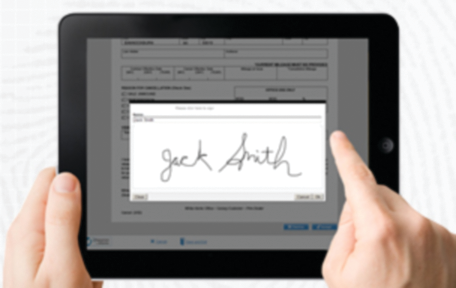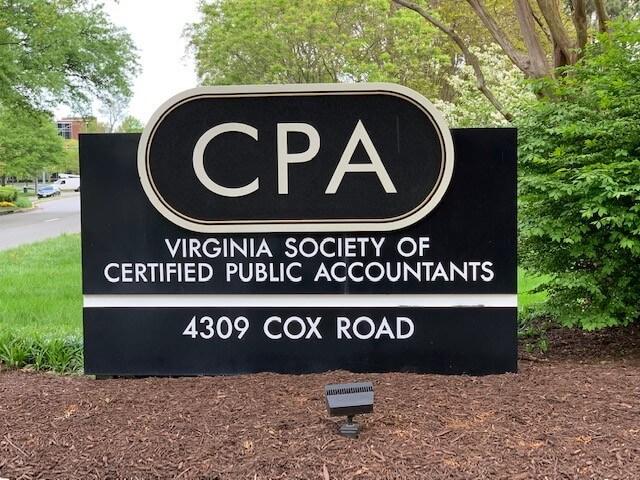Electronic Signatures (E-Signatures) became effective in the United States on October 1, 2000 when Congress passed the Electronic Signatures in Global and National Commerce Act (“ESIGN Act”). ESIGN was enacted specifically to ensure that any agreement signed electronically will not be denied legal force, effect, validity, or enforceability solely because an E-Signature was used in its formation.
As a result, online E-signatures, in both personal and commercial transactions, have been granted the same legal status as a written signature – so they are now the legal equivalent of hand written signatures.
Most accounting firms have clients that have recently purchased a home using E-Signature technology. That’s because we are seeing a rapid acceleration of E-Signature usage in the real estate, mortgage, healthcare, insurance, communications, recruiting and other industries through broad based E-Signature solutions such as Adobe EchoSign and DocuSign. These solutions were designed for mass markets and do not meet the needs, demands and workflow requirements of the tax & accounting industry. However, with the recent release of at least one tax & accounting specific E-Signature solution, they can now be used across a wide range of both client facing and internal firm documents.
Using E-Signatures in the Tax & Accounting Industry
For firms that are embracing E-Signatures, they typically start by sending annual engagement letters or §7216 consent forms to clients, or annual independence surveys to their staff. These documents are ideal candidates for E-Signature technology because they are often standardized forms, need annual signatures, can be batch processed with mail merge functionality for a higher efficiency gain and the signers can sign remotely from any PC, laptop, tablet or smart phone. Firms are reporting that they can process these documents at a fraction of the cost of mailing hard copies. They are receiving E-Signed documents back from their clients and staff in less than seven minutes and the overall workflow process is significantly improved.
As for other client facing documents, firms are also sending management representation letters, audit representation letters, A/R and A/P confirmations, new client acceptance forms, payroll processing forms, and Forms W-9 and 4506-T for E-Signature. They are also sending credit card authorization forms to accelerate cash collections. As for other internal documents, firms are also sending IT policy forms, partnership agreements, internal routing sheets, and a wide variety of human resource related documents including offers of employment, Forms W-4 and I-9, employee handbooks, medical, dental, insurance and 401k forms for E-Signature.
The IRS and Form 8879
The biggest demand for using E-Signatures in the tax & accounting profession is on Form 8879. The IRS currently does not accept E-Signatures on Form 8879, even though they are rarely, if ever, submitted to the IRS. They are simply retained on file by the taxpayer and the ERO for a period or three years. The instructions in Form 8879 do not specifically address the use of E-Signatures, but there is a single sentence in Publication 1345 that states “This does not alter the requirement that taxpayers must sign Form 8879 and Form 8878 by handwritten signature.” This is actually quite ironic since the entire premise of e-filing tax returns is to reduce paper based tax return filings. The only step to e-filing a tax return that requires paper is the requirement for the taxpayer to print, sign and send back Form 8879.
On January 23, 2013, the IRS issued Internal Revenue Bulletin 2013-4, Announcement No. 2013-8 seeking recommendations for appropriate E-Signature standards in the tax & accounting profession. They stated “E-signature standards will promote efficiency, reduce burden and improve identity proofing methods to confirm the identity of the signer”. Unfortunately, we do not know when the IRS will provide formal approval or the specific requirements for using E-Signatures on Form 8879. Many industry thought leaders feel it will be at least two more years before we get the final approval.
So are firms using E-Signatures on Form 8879 anyways? Yes, and with tremendous success. I’m not saying that you should do it, but for the firms that are, they are basing their decision on the following points:
- The ESIGN Act of 2000 makes E-Signatures legal and valid
- Effective January 2013, the IRS is allowing E-Signatures on Form 4506-T and §7216 consent
- At least one large tax vendor is currently in an E-Signature pilot program with the IRS on Form 8879
- The purpose of e-filing tax returns is to reduce paper based processes and create efficiency for the taxpayer, tax preparers and the IRS. Requiring a handwritten signature from the taxpayer on Form 8879 is the only part of the e-filing process that requires anyone to print a piece of paper.
- Most tax & accounting firms spend countless hours and thousands of dollars tracking and managing manually signed Form(s) 8879
- Form 8879 is rarely, if ever, submitted to the IRS. It is required to be maintained on file by the taxpayer and ERO for 3 years.
- The benefits outweigh the risks
- IRS solicited industry feedback with Announcement 2013-8.
Top Considerations When Choosing an E-Signature Solution
Every industry vertical has its own set of document types and workflow requirements surrounding the E-Signature process. Your firm should look for a solution that is tax & accounting specific. For example, your staff should be able to quickly send documents for E-Signature while classifying each document with accounting specific workflow and reporting data such as Document Type, Engagement Type, Tax Year and Partner. Your solution should provide firm wide reports that are accessible by all members of your firm and provide for centralized management of the E-Signature process. For example, firm administrators and partners should have complete visibility over every document sent for E-Signature within their firm. They should be able to quickly sort, filter and search to send reminders, view documents and download final signed documents of other users.
Accounting firms often need to mail merge and batch process documents requiring signatures. Examples include annual engagement letters and §7216 consent for clients, and annual independence surveys for staff. Your solution should provide the tools necessary to mail merge and batch process hundreds of documents for E-Signature with the click of a button. To effectively accomplish this, your solution should provide for text tags in documents to automate the signature placement process. Otherwise, your staff will need to manually drag and drop the signature location into each document.
Finally, be careful of monthly subscription fees. Most providers have “reasonable use clauses” which restrict the number of documents that can be sent monthly per licensed user. Accounting firms tend to have seasonal demands and can quickly surpass the reasonable use clauses, resulting in higher monthly fees. To obtain the full benefits of your E-Signature solution, you should license all members of your firm so they have access to the real time reporting, tracking and management features. As a result, we recommend solutions that allow free licenses to all members of your firm, and then bill based on the actual number of documents sent for E-Signature.
——————
Steve Dusablon is the President and CEO of cPaperless, LLC, a software company that develops paperless solutions for tax and accounting firms. cPaperless partnered with Adobe EchoSign to develop CPA SafeSign, the first to market E-Signature solution designed specifically for the tax and accounting industry.
Thanks for reading CPA Practice Advisor!
Subscribe Already registered? Log In
Need more information? Read the FAQs
Tags: Firm Management




